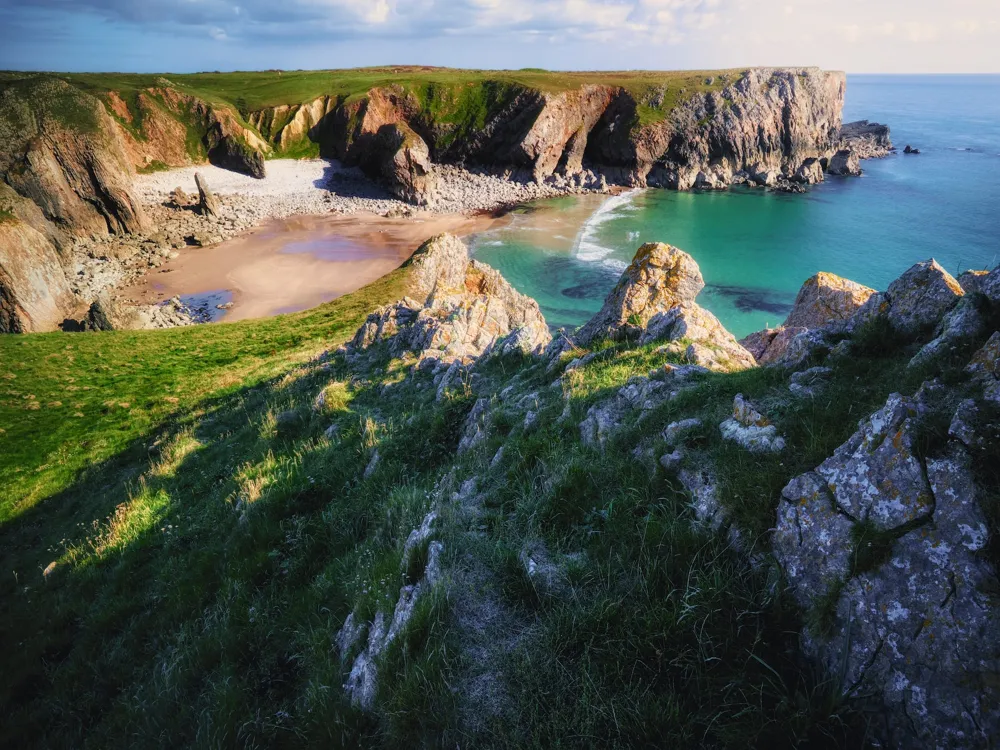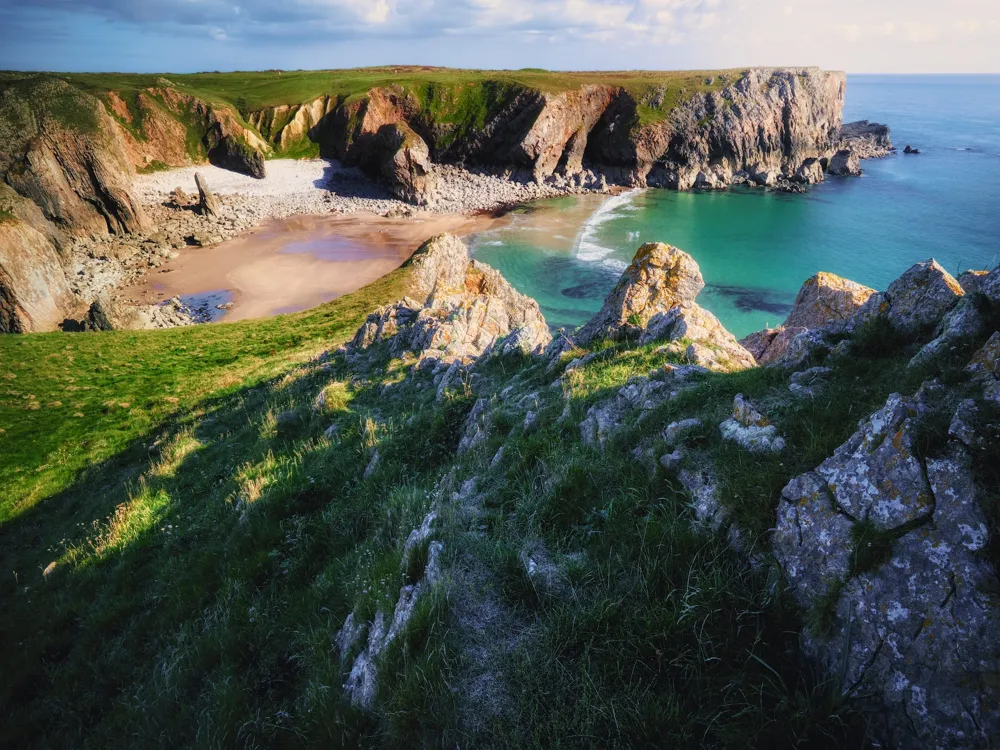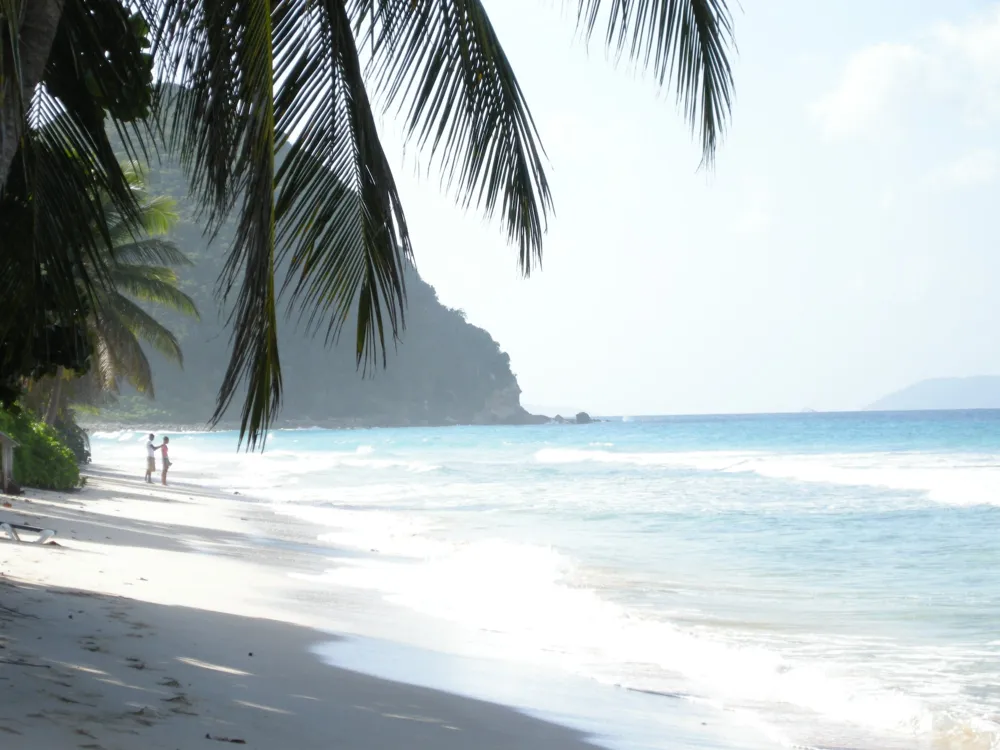Halong Bay, a UNESCO World Heritage site in Vietnam, is an iconic destination known for its emerald waters and thousands of towering limestone islands topped with rainforests. Its name, 'Halong,' means 'Descending Dragon,' which is derived from a legend that explains its unique landscape. The bay covers an area of around 1,553 square kilometers and is home to approximately 1,600 islands and islets, most of which are uninhabited and unaffected by human presence. This breathtaking seascape also serves as a hub for biodiversity, with various ecosystems including coral reefs, freshwater swamp forests, and mangrove forests. The beauty of Halong Bay is not only in its visual appeal but also in its cultural and historical significance. The history of Halong Bay is as fascinating as its scenery. Archaeological studies have shown that humans have inhabited the area as far back as 18,000 years ago. Throughout history, the bay has been a significant spot for Vietnamese culture and has been the inspiration for countless legends. The most famous legend is that of a dragon sent by the Jade Emperor to help the Vietnamese fight invaders. When the dragon descended, it spat out jewels that turned into the islands, creating a natural fortress against the invaders. The unique landscape of Halong Bay is the result of millions of years of geological evolution. The bay's characteristic limestone karsts are believed to have formed over 500 million years through a combination of various geological processes, including the erosion and deposition of sediment under the sea. Halong Bay's ecological diversity is remarkable. The area is home to about 14 endemic floral species and about 60 faunal species. It's a paradise for biodiversity enthusiasts, offering a chance to see a variety of species, including the endangered Cat Ba langur. The architecture of Halong Bay is not just about the physical structures built by humans, but more about the natural architecture created by geological processes over millions of years. The bay's most notable features are its limestone karsts and islets in various shapes and sizes. Some of these formations are hollow, with enormous caves, others support floating villages of fishermen, and some feature beautiful beaches and lagoons. Among the most notable natural structures are the Dau Go Cave and the Thien Cung Cave, both offering spectacular stalactites and stalagmites. The Sung Sot Cave features vast chambers and is considered one of the most beautiful caves in Halong Bay. The floating villages of Halong Bay, such as Cua Van and Vung Vieng, are remarkable examples of adaptation to life on the water. These villages are built on floating platforms and are sustained by fishing and marine aquaculture. While the natural landscape dominates, there are also man-made structures that blend seamlessly with the environment, like traditional junks and modern cruise ships, which are often designed to reflect the area's natural beauty and cultural heritage. The best time to visit Halong Bay is from October to April when the weather is cooler and less rainy. However, the bay has its own beauty in each season, and the off-season might offer a less crowded experience. Selecting the right cruise is crucial for your Halong Bay experience. Consider the length of the trip, the route, and the size of the boat. Smaller boats offer a more intimate experience, while larger ones might have more amenities. Essential items to pack include sunblock, hats, insect repellent, comfortable footwear for exploring caves, and a camera to capture the stunning scenery. It's important to respect local customs and practices. Be mindful of your behavior, dress appropriately when visiting local communities, and support local businesses. To reach Halong Bay, the nearest airport is Noi Bai International Airport in Hanoi. From Hanoi, you can either take a bus, a private car, or a shuttle to Halong Bay, which takes about 3-4 hours. Alternatively, there are seaplane services directly to Halong Bay for a unique aerial view of the landscape.Overview of Halong Bay
History and Mythology
Geological Formation
Biodiversity
Architecture of Halong Bay
Natural Formations
Floating Villages
Man-Made Structures
Tips When Visiting Halong Bay
Best Time to Visit
Choosing a Cruise
Packing Essentials
Respecting Local Culture
How To Reach Halong Bay
Hon Trong Mai
Halong Bay
₹ 15,260 onwards
View halong-bay Packages
Halong-bay Travel Packages
View All Packages For Halong-bay
Top Hotel Collections for Halong-bay

Private Pool

Luxury Hotels

5-Star Hotels

Pet Friendly
Top Hotels Near Halong-bay
Other Top Ranking Places In Halong-bay
View All Places To Visit In halong-bay
View halong-bay Packages
Halong-bay Travel Packages
View All Packages For Halong-bay
Top Hotel Collections for Halong-bay

Private Pool

Luxury Hotels

5-Star Hotels

Pet Friendly






















